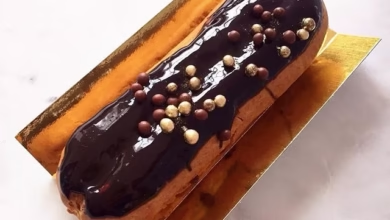The Mille-Feuille: A Delightful Dance of Layers and Flavors

For pastry enthusiasts and dessert lovers, few treats elicit as much excitement as the Mille-Feuille. Often overshadowed by its more famous cousin, the croissant, this exquisite French pastry is a testament to the intricacies and artistry of French patisserie. But what exactly is a Mille-Feuille, and why does it hold such a revered place in the world of sweets?
The Origin and Evolution
The term “Mille-Feuille” translates to “a thousand layers” in French, aptly describing the pastry’s signature characteristic: a delicate stack of puff pastry layers, usually numbering three, that are interspersed with rich cream fillings. Also known as the “Napoleon” in many English-speaking regions, the Mille-Feuille’s history is somewhat of a mystery. While its precise origins remain debated, it is generally agreed that it was refined to its modern form by French pastry chefs in the 18th century.
Traditionally, the layers are filled with pastry cream—often flavored with vanilla or custard—and topped with a thin layer of fondant icing, occasionally drizzled with chocolate for a marbled effect. In classic French patisseries, the pastry cream is sometimes substituted with layers of jam or fruit compote to add a fruity depth to the flavor profile.
The Assembly: A Culinary Engineering Feat
Creating a Mille-Feuille is as much about skill as it is about patience. The butter-laden puff pastry must be rolled and folded multiple times to achieve its signature flakiness, a process known as lamination. The dough is then baked until golden and crisp, providing the perfect canvas for the creamy layers within.
The true art of Mille-Feuille lies in its construction. Each layer must be meticulously assembled to maintain the pastry’s structural integrity while ensuring that every bite offers a harmonious blend of textures. While the puff pastry provides a delicate crunch, the cream adds smoothness and richness, combining in a delightful symphony of flavors.
Modern Takes and Creative Twists
Modern chefs and pastry artisans have taken the Mille-Feuille beyond its traditional confines, playing with flavors and textures to suit contemporary tastes. Variations can include fillings that range from tantalizingly tangy lemon curd to lush chocolate ganache or fresh raspberries for a burst of color and tartness. Some innovative versions even incorporate savory elements, such as smoked salmon or herbed cream cheese, offering a unique twist on the dessert’s classic structure.
Enjoying a Mille-Feuille
Though enjoyed worldwide, the Mille-Feuille holds a special place in French cuisine, often served in elegant slices at both high-end patisseries and humble bakeries. It pairs beautifully with a cup of coffee or tea, providing a perfect afternoon indulgence or a celebratory dessert.
In its many forms, the Mille-Feuille remains a testament to the enduring artistry and creativity of the culinary world. Its layered complexity, both in construction and taste, invites those who partake to savor each bite, making it not only a feast for the palate but a joy to the senses. Whether enjoyed in its classic form or a modern interpretation, the Mille-Feuille continues to captivate and delight dessert lovers everywhere.




